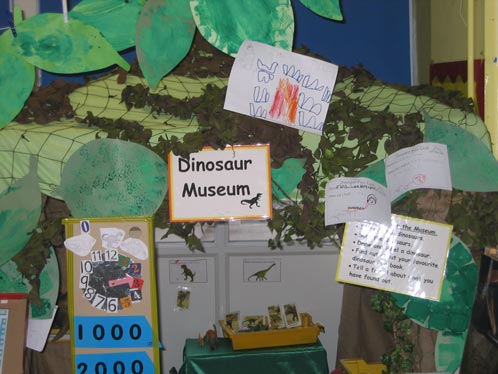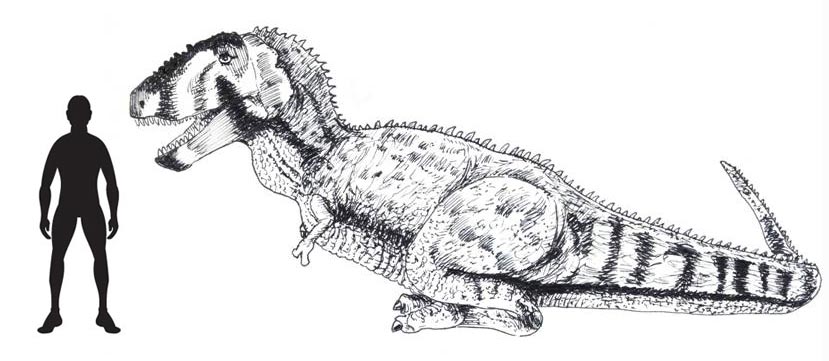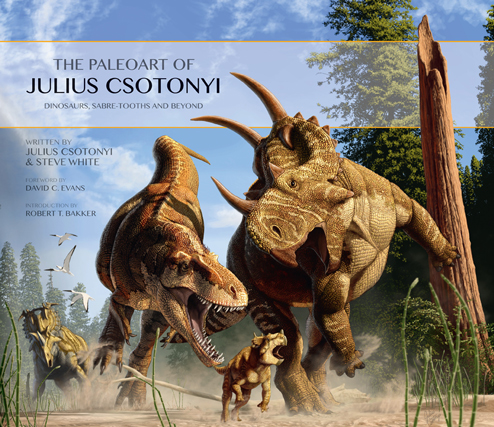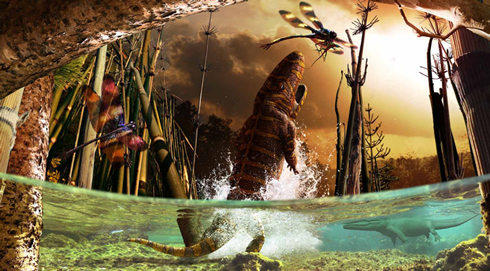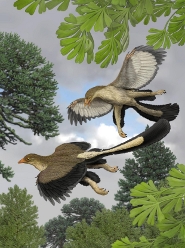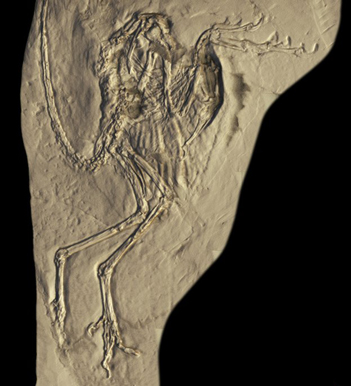New Research Leads Palaeontology Enters the “Metal Age”
Exploring the Metallome of Ancient Leaves Provides Insight into Plant Biochemistry
Readers may be familiar with the term genome, the genetic material that relates to an organism. The word genome is believed to be derived from the words – gene (the molecular unit of heredity of an organism) and chromosome (the rod-like structures of DNA and protein found in the nuclei of cells that carry the genetic information in the form of genes). Genome mapping has provided palaeontology with a whole new field of science to explore, plotting the genetic relationships between organisms as well attempts to recover viable organic material from fossils for further study.
This is exciting stuff, for example, last year Everything Dinosaur reported on the work of a team of international researchers who had been able to extract partial genome data from the 700,000-year-old fossils of an ancient horse.
To read more about this research: Ancient Fossil Decodes Horse Evolution.
Exploring the Metallome
However, preserved with fossil material and only accessible to science via the use of some astonishingly sophisticated technology lies another group of substances that can provide researchers with new information on organisms that lived long ago. These are metallic elements and scientists from the University of Manchester are leading the world in research on the metal constituents of fossil and living organisms, the quest to plot the metallome is on!
Virtually every living organism has metallic elements within it, elements such as Iron, Zinc, Copper and Nickel. These metals can be used as catalysts for biological processes, as important components of biosynthetic pathways used to produce important molecules, or simply be stored for use in other biological reactions.
Important New Information from the Fossil Record
We might be classed as carbon based life forms (carbon makes up about 18% of the typical biomass of a person) and these metals may be present in very small amounts but a number of metal elements seem to be essential to sustain life. To a palaeontologist, these metals may be significant as the bonds that they form with organic molecules might be strong enough to permit the preservation of molecular material across deep, geological time. If these metals can be detected, then important new information can be gleaned from the fossil record.
A case in point was the recently published paper that examined how dinosaurs recovered from injuries. Metal traces mapped from a 150-million-year-old Allosaurus toe bone gave scientists a new perspective on the lives of the Dinosauria.
To read an article about this research: Those Very Tough Dinosaurs.
University of Manchester scientists have used a synchrotron particle accelerator to bombard fossil leaves with intense X-rays, the diffusion of which, as they penetrate the fossil material permits the research team to work out the chemical composition and hence to map elements as they existed on a fifty-million-year- old leaf.
Metallome Study
By comparing their finding with the metallome of a modern leaf from a similar species, in this case an Acer, the team can be confident that they are mapping the metals within the leaf and not contaminating their sample with other elements that may have entered the leaf through the fossilisation process. Such is the accuracy of their data, that in one example they have been able to plot the feeding trails left by caterpillars as they fed upon the leaf back in the Palaeogene.
The fossil plant materials are from the famous “Green River Formation” of the western United States. The strata that makes up this formation consists of finely grained mudstones laid down in depositional sequence that represents approximately six million years or so, 53.5 to 48 million years ago (Eocene Lagerstätte). Exquisitely preserved fossils can be found in a number of areas, notably fossil fish and insects with occasionally other vertebrates such as birds. Plant fossils are relatively abundant with the majority of the plant fossil material consisting of individual leaves that were transported by water to the sites of deposition and fossil formation.
A Beautifully Preserved Fossil Fish (Green River Formation)
Picture credit: Everything Dinosaur
Employing a Synchrotron
Researchers from Britain’s University of Manchester, the Diamond Light Source (Didcot, Oxon) and the Stanford Synchrotron Radiation Lightsource in the Unites States, including geochemists and physicists have published their findings in the journal of the Royal Society (Chemistry). Lead author of the scientific paper Dr Nicholas Edwards (postdoctoral researcher – University of Manchester) stated:
“The synchrotron has already shown its potential in teasing new information from fossils, in particular our group’s previous work on pigmentation in fossil animals. With this study, we wanted to use the same techniques to see whether we could extract a similar level of biochemical information from a completely different part of the tree of life. To do this we needed to test the chemistry of the fossil plants to see if the fossil material was derived directly from the living organisms or degraded and replaced by the fossilisation process.”
Fossilised leaves from the Green River Formation excavated from sites in Colorado and Utah were studied. The results from the synchrotron experiments on the fifty million year old fossil material was then compared to extant similar plant species, in this case a type of Acer (Acer pseudoplatanus). The comparison helped the researchers to determine which metals they should be scanning for and where in the fossil leaves they were likely to occur.
Dr Edwards added:
“We know that plant chemistry can be preserved over hundreds of millions of years, this preserved chemistry powers our society today in the form of fossil fuels. However, this is just the ‘combustible’ part; until now no one has completed this type of study of the other biochemical components of fossil plants, such as metals.”
Combining Synchrotron Facilities
By combining the unique capabilities of two synchrotron facilities, the team were able to produce detailed images of where the various elements of the periodic table were located within both living and fossil leaves, as well as being able to show how these elements were combined with other elements.
Distribution of Copper, Zinc and Nickel in Fossil Leaves
Picture credit: University of Manchester
The figure above shows optical images with metal elements mapped in an extant species (L. styraciflua), images labelled A-D. Pictures E-H show the same data but this time in a fossil leaf from the Green River Formation. Copper seems to be at its highest concentration at the serrated tips of the leaves (both extinct and extant) – images B and F. Black image areas indicate low concentrations of the element, whilst white areas indicate relatively high concentrations.
Examining the Research Data
The research data shows that the distribution of copper, zinc and nickel in the fossil leaves was almost identical to that in modern leaves. Each element was concentrated in distinct biological structures, such as the veins and the edges of the leaves, and the way these trace elements and sulphur were attached to other elements was very similar to that seen in modern leaves and plant matter in soils.
Co-author of the scientific paper, Professor Roy Wogelius, from Manchester’s School of Earth, Atmospheric and Environmental Sciences, commented:
“This type of chemical mapping and the ability to determine the atomic arrangement of biologically important elements, such as copper and sulphur, can only be accomplished by using a synchrotron particle accelerator.
The synchrotron analysis was so sophisticated that in one remarkable specimen, the research team were able to identify the feeding trails of caterpillars in a fossilised leaf. Elemental maps of the sample clearly showed how the copper in the leaf tissue was recycled by the parasitic insects. The leaf showed the presence of frass tubes similar to those made by the modern species Catastega aceriella. The caterpillars of this moth feed on leaf tissue and generate cocoons, or frass tubes, out of their fecal pellets and silk. High resolution copper maps of the fossil even allowed the research team to see the individual fecal pellets.
Professor Wogelius explained:
“In one beautiful specimen, the leaf has been partially eaten by prehistoric caterpillars, just as modern caterpillars feed and their feeding tubes are preserved on the leaf. The chemistry of these fossil tubes remarkably still matches that of the leaf on which the caterpillars fed.”
The Specimen that show evidence of Caterpillars Feeding
Picture credit: University of Manchester
The images above (I and J) are an optical image and a false colour image mapping elemental distributions. Inset images in I and J (Cu) are magnified views of the boxed area showing the extremely fine detailed physical and chemical preservation of the larvae frass tubes and leaf venation. Importantly, this research has demonstrated that the chemistry of the fossil leaves is not sourced from the surrounding environment, it represents elements laid down in the living leaves.
Manchester palaeontologist and co-author of the paper, Dr Phil Manning said:
“We think that copper may have aided preservation by acting as a ‘natural’ biocide, slowing down the usual microbial breakdown that would destroy delicate leaf tissues. This property of copper is used today in the same wood preservatives that you paint on your garden fence before winter approaches.”
This work, along with other recent research papers highlights the role of X-ray bombardment via synchrotrons and the new insights that such techniques can provide in terms of data retrieved from the fossil record.
Everything Dinosaur is grateful to the University of Manchester for information used in the compilation of this article.
For replicas of iconic animals from the fossil record: Dinosaur Models and Crafts for Kids.







